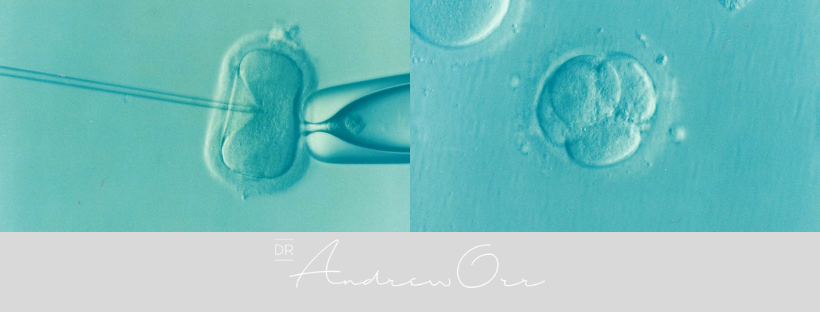Chronic pain and chronic illness can be debilitating. Both pain and chronic conditions can go hand in hand and both can interfere in the daily function in life.
While chronic disease state can cause pain, many do not realise that there are also other factors that exacerbate chronic disease and chronic pain.
Diet, alcohol, drugs, cigarettes, additives in food, chemicals, environment, and emotions can all exacerbate and flare chronic disease state and pain. But some of these things people do not correlate to being part of their daily struggles and increased levels of pain.
Anxiety and depression are two of the things that can exacerbate pain and also lead to chronic pain pathologies. For this post I am going to focus of anxiety because I see so many people who have it. Many people do not realise that they actually have anxiety.
Many people also ignore the signs of anxiety and fob it off as not being able to switch off, or they think too much, or they just do not know how to slow down and relax. Many just fob it off saying that they are busy and don’t have time to stop. They are basically busy being busy. But is it really all those things they think they are?
What is anxiety?
Anxiety is a normal emotion and almost everyone has experienced anxiety at some point. It is the emotion that people have when something dangerous might happen. Anxiety is closely related to fear. Fear occurs when something dangerous is happening. Anxiety can also activate that fight or flight response and get one adrenalin activated and running through ones veins. Adrenalin is activated to help us get away from danger. The problem with anxiety, danger isn’t really happening. It is the perception of something that may happen. None the less, the body prepares for danger and the nervous system goes into hyperdrive and the fight or flight response is activated.
As mentioned before, anxiety can also be when something dangerous is seemed to be pending, or hasn’t happened yet, though we perceive it could. This is why people with anxiety always tend to be nervous. They are nervous in their feelings, their body and their behaviours as well. These people are quite literally waiting for the possibility of something dangerous to happen, or needing to get up and get moving. They literally cannot sit still.
Anxiety can also be divided into different aspects: feelings, physical manifestations, thinking, and behaviours.
Feelings
A number of feelings are associated with anxiety. It can cause one to feel apprehensive, feel alarmed, feel tension, feel nervousness, feel doubtful and also make one feel out of control.
Physical manifestations
Anxiety can also lead to physical manifestation in the body as well. It can cause muscle tension, increased hear rate, palpitations, increased blood pressure, heaviness in the chest, gastrointestinal upset and urgency, cold hands and feet, increased sweating, dizziness and increased energy and even cause the body to shake.
Thinking
Anxiety can also influence the way we think. It can cause increased worry, increase focus on things that have not occurred, increased focus on possible danger and all of the consequences that could occur, increased thinking of the worst case scenarios of what could happen to one self and anxiety can also cause increased thinking and overthinking in general.
Behaviours
Anxiety can also influence the way be behave. It can cause restlessness, avoidance of activities ( for fear of perceived danger), cause nervousness, inability to sit still, need to get up and move all the time, and cause difficulty in completing things.
Sometimes, anxiety becomes persistent and then can get in the way of day-to-day life. When anxiety is persistent and interfering in day-to-day life, it’s considered no longer normal. It is then considered a disorder.
Anxiety and pain
Everyone experiences pain at some point in their life, but for those with anxiety and depression, pain can become intense and very hard to treat.
Anxiety is now known to be one the most common conditions that accompanies chronic pain. Anxiety tends to go hand in hand with chronic pain, because pain is a danger signal. When we get pain it is to signal danger that something is wrong in the body and requires attention. Pain then sets of the warning system that then leads the nervous system to respond. This then often leads to that fight or flight response talked about previously.
The nervous system’s response to pain just in the same way it responds to danger. This can be in the following ways:
- Feelings of alarm, apprehension and distress
- Increased reactivity of the body, such as
- Increased muscle tension,
- Increased heart rate ad blood pressure,
- Gastrointestinal reactivity and digestive pain and upset
- Increased cognitive focus on the pain, and then a tendency to worry and catastrophize about it
- Avoidance behaviours, such as guarding, resting, staying home and not engaging in activities that might bring about or increase pain
In acute pain, these responses might be quite helpful. These feelings of pain and fear allow someone to seek help in order to prevent further injury.
In chronic pain, these feelings become anxiety and avoidance behaviours. When someone has chronic pain for a long time, the anxiety and avoidance behaviours can become chronic. The chronic anxiety leads to a chronic sense of alarm or distress, which makes patients nervous and can’t sit still and finds it very hard to relax and recover.
Anxiety and chronic pain
Chronic pain also affects the brain and thought patterns and it can lead to a chronic focus on pain, which pre-occupies the attention of the pain sufferer. Everyday decisions seem to turn on how much pain the patient has at any given time. It also leads to then nervous system to become over reactive. This can then lead to chronic muscle tension, which can switch pain pathways on more and this then leads to more pain. Chronic avoidance behaviours can then lead to an increasing sense of social isolation, inactivity, muscles loss and then not being able to cope or function physically and mentally. Daily life literally can become an effort and the person actually become disabled.
When the body reaches this state the nervous system has become stuck in the vicious cycle of constant reactivity. Pain pathways become more reactive and harder to switch off and pain levels can become very hard to manage. This state of reactivity is associated with a condition called central sensitization. This is where acute pain has becomes chronic and then this goes hand in hand with anxiety and other mood disorders.
Anxiety can present differently in each person
Anxiety can present very differently in each person and chronic disease states can also trigger anxiety. Anxiety can also exacerbate a chronic health condition too. It can be a vicious cycle that keeps going around and around.
Everyone’s cause of anxiety is different and it’s often a combination of factors that leads someone to feel the way they do. Many do not even realise they are suffering anxiety as mentioned before.
It’s important to remember that you can’t always identify the cause of anxiety, or change difficult circumstances. You cannot always be in control of every situation either.
Recognise the signs and seek professional help
The most important thing is to recognise the signs and symptoms and seek advice and support.
There are people that specialise in managing chronic pain. Good pain management programs should use a multi-modality treatment and management approach consisting of the most effective treatments for anxiety, such as counselling and psychology, medications, diet and lifestyle changes, exercise and other therapies that can assist with pain and anxiety.
With the right help and seeing the right people, it is possible to get ones life back despite having chronic pain, and in the process overcome anxiety. The one thing I always explain to people it that you will not be able to do this on your own. You will need help from qualified professionals. No amount of Dr Google, or advice from friends and family is going to be able to help you get through this without the help of qualified professionals trained to help in this area of healthcare.
If you are experiencing long term pain and could also be suffering from chronic anxiety, please go and talk to your healthcare provider. Many people are unaware that they have anxiety and this is actually exacerbating their current pain. Your healthcare practitioner can also talk to you about effective pain management and also help you seeking help and getting coping skills for your anxiety as well.
Beyond Blue has a very simple Anxiety checker (click here) and I urge everyone to take the test, especially those with chronic long-term pain and health issues.
Please remember that there is help out there. Please do not suffer in silence thinking that there is no help, or no end in sight for your pain and your anxiety as well.
Take care
Regards
Dr Andrew Orr
-No Stone Left Unturned
-Women’s and Men’s Health Advocate









